You have probably seen thousands of cinder blocks that are used in different construction projects. These cinder blocks are widely used as basic building blocks.
They are available in a variety of sizes and dimensions, and depending on your needs; you can choose any of these cinder blocks. Hence, selecting the right cinder block dimension for any construction project can be a daunting and overwhelming task.
Cinder blocks are mostly of the same size, but their dimensions can vary greatly. The standard size of cinder blocks can also differ based on the ASTM standard. So, we are here to help you offer a better insight regarding the different cinder block dimensions and their wide applications in various construction projects.
We hope this article will help you choose the right cinder block dimension for your household project. So, without wasting any more time, let us dive right into it!
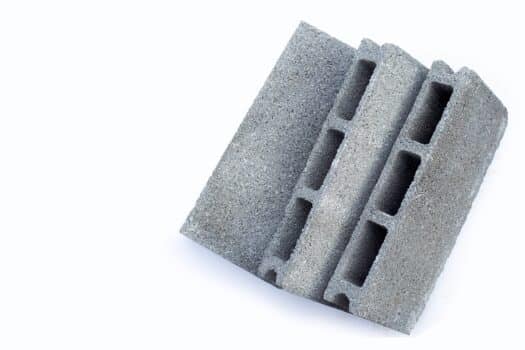
What Are Cinder Blocks?
Cinder blocks are commonly called construction blocks that are made from a material called cinder. These are concrete masonry units that are widely used as building blocks in any construction project. The cinder materials for making cinder blocks can be bottom ash, fly ash, coal dust, and other fine ash particles derived from burning coal.
The major difference between cinder blocks and cement/concrete blocks lies in this constituent aggregate. Cinder blocks have an aggregate material as compared to cement and concrete bricks. In these cinder blocks, the aggregate is paired with cement and sand to create a hollow structure of these concrete masonry units.
What Are Cinder Block Dimensions?
As we mentioned, cinder blocks come in different dimensions that are measured in concrete masonry units (CMU). The actual size of most cinder blocks is identified by their depth, such as the thickness created by the wall. A 4-inch dimension signifies that the cinder block is 4-inch wide.
Furthermore, the overall dimension of any standard size rectangular block is represented in terms of its height, width, and length. The standard sizes of most cinder blocks are 16x8x8 inches, including the thickness of the mortar.
If we leave aside the thickness of the mortar joints, the actual measurements of the cinder blocks become ⅜ inch less than their standard size. So, the mortar joints are usually ⅜ inch in thickness, which adds to the standard size of the cinder blocks.
In addition to their standard size, cinder blocks are also available in different dimensions and shapes that can be used in various construction projects. However, the standard size of the cinder blocks is most widely used in any major construction project.
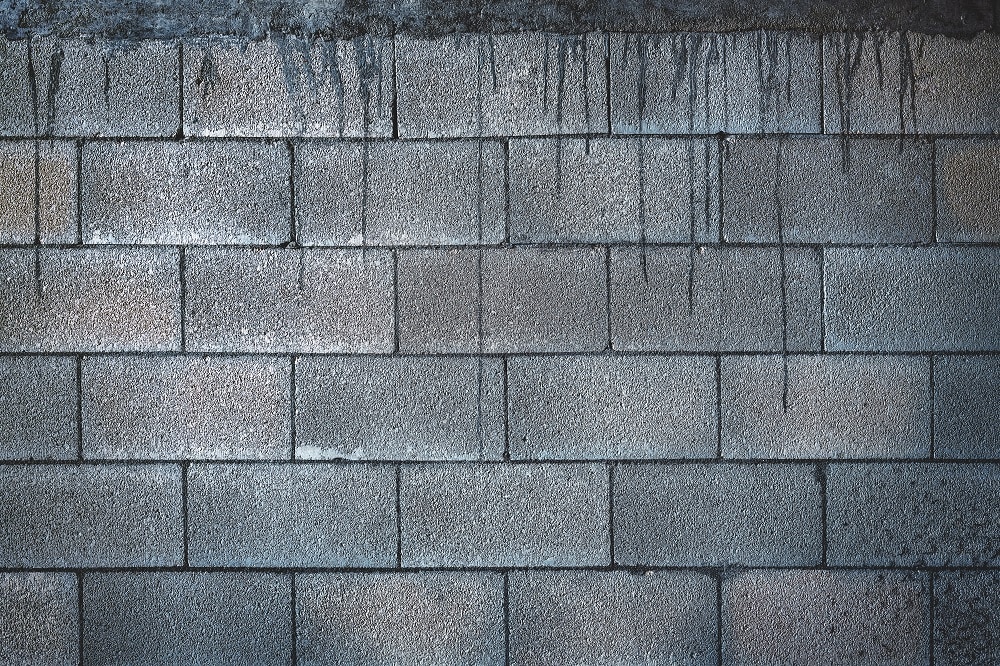
Different Cinder Block Dimensions
When it comes to choosing the right cinder blocks, there are different dimensions that you can consider for your construction project. In this section, we will be discussing the most common dimensions of cinder blocks. So, let’s take a look!
1. 4-inch Cinder Blocks
The 4-inch dimension of cinder blocks is represented by their 4-inch width. The length can vary between 8 inches to 16 inches, while the breath usually ranges between 4 to 8 inches if we consider the nominal sizes of the cinder blocks.
As far as the shape of the cinder blocks is concerned, they can be a solid pier or a hollow pier. So, while choosing the 4-inch dimensions, it is better to consider the shape of the cinder blocks for your project. Furthermore, you can also calculate the number of cinder blocks you’ll need based on the difference between their actual size and nominal size.
2. 6-inch Cinder Blocks
Full cinder blocks are 6 inches wide, 8 inches high, and 16 inches long. Their nominal size is represented as 6x8x16 inches signifying their width, height, and length, respectively. However, their actual size will be ⅜ inches less, leaving the space for the mortar joints to be attached.
These blocks are also available in 6-inch half-size where the width and height remain the same, but the length of the cinder blocks is 8 inches. Both the 6-inch full and half cinder blocks are available in various shapes, including the solid pier, hollow pier, hollow stretcher, hollow corner slash, solid corner sash, and 45-degree angle.
Additionally, the hollow slash and corner slash cinder blocks come with indented ends. So, you get a wider variety of cinder blocks in the 6-inch dimension.
3. 8-inch Cinder Blocks
The 8-inch cinder blocks are mostly available in two CMU sizes- 8-inch full and 8-inch half. The 8-inch full-size CMU or cinder blocks have a length of 16 inches with a width and height of 8 inches. The nominal dimensions are represented as 8 inches x 8 inches x 16 inches based on their width, height, and length.
However, their actual dimensions differ from their nominal dimensions as the actual size of their width is ⅜ inch lesser, allowing space for the mortar joint. Furthermore, the only difference between the 8-inch full and 8-inch half cinder blocks is their length. The 8-inch half CMU comes with a length of 8 inches instead of 16 inches.
Thus, both the actual sizes and nominal sizes differ for the half and full dimensions.
4. 10-inch Cinder Blocks
Just like the 8-inch cinder blocks, the 10-inch blocks are also available in two nominal dimensions – 10-inch half and 10-inch full. The nominal size of the 10-inch half cinder blocks is represented as 10 inches x 8 inches x 8 inches.
Again, the 10-inch half and full cinder blocks only differ in their lengths. The 10-inch half has a length of 8 inches instead of 16 inches like that of a 10-inch full-size CMU.
Both the 10-inch half and full dimensions are available in various shapes. Along with the common solid and hollow pier, these concrete blocks also come in solid corner sash and hollow corner sash with indented ends. They are also available in the hollow stretcher and hollow slash, along with the very common 45-degree angle.
5. 12-inch Cinder Blocks
The 12-inch cinder block dimension is also available in full and half like most cinder blocks. The 12-inch dimension is based on the actual size of the width. Both the 12-inch half and full dimensions come with a height of 8 inches and a width of 12 inches.
Thus, the only difference in their standard sizes is their length. While the 12-inch half CMU has a length of 8 inches, the 12-inch full CMU is 16 inches long.
Furthermore, both the 12-inch half and full construction blocks are available in different shapes. They come as the solid pier, hollow pier, solid corner sash, hollow corner sash as well as the hollow double sash. A hollow concrete stretcher block is also available in this dimension.
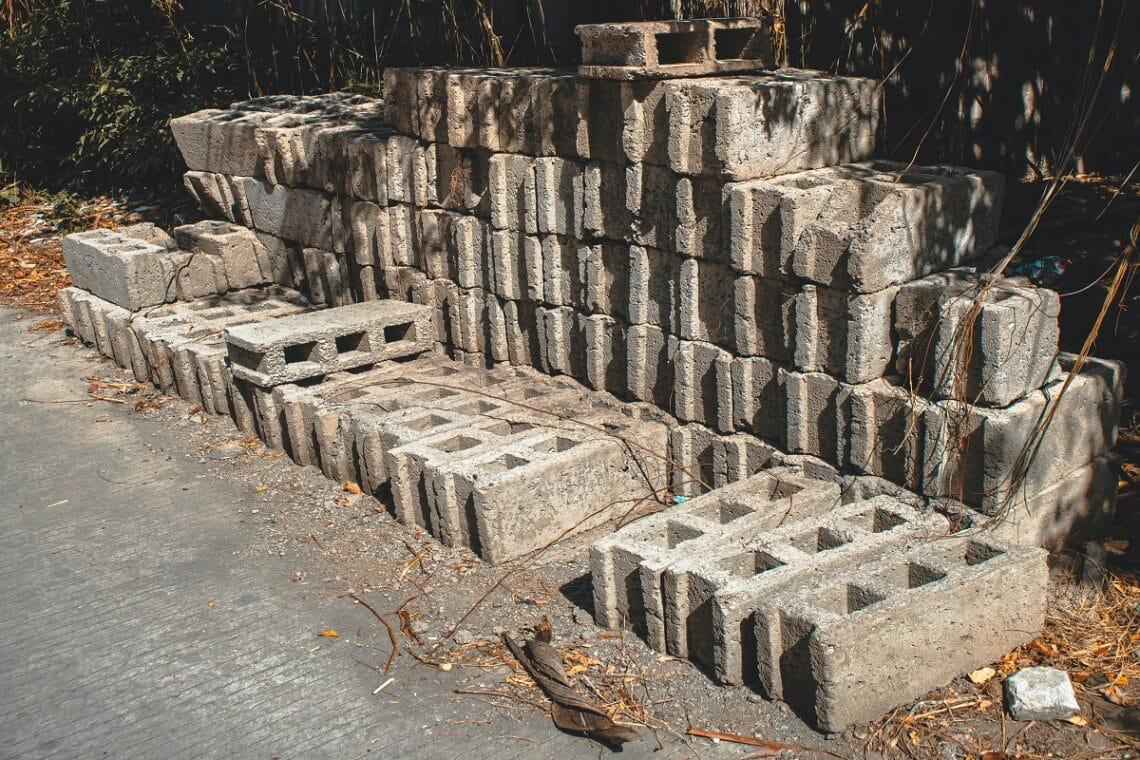
Project Ideas Inspired From Cinder Block Dimensions
As you can see, different cinder block dimensions are available on the market. So, based on your building projects, you can choose the right cinder block dimensions and sizes. Here, we’ll be discussing some very popular building projects that are inspired by different cinder block dimensions.
1. Garden Bed
Building a beautiful garden bed can be a great idea if you want to spruce up the small vegetable garden in your backyard. You can use cinder blocks to make the garden bed and support the plants. The hollow pier blocks come with large natural holes that can be used as a pot to plant small herbs and then place them together with the larger plants in your garden.
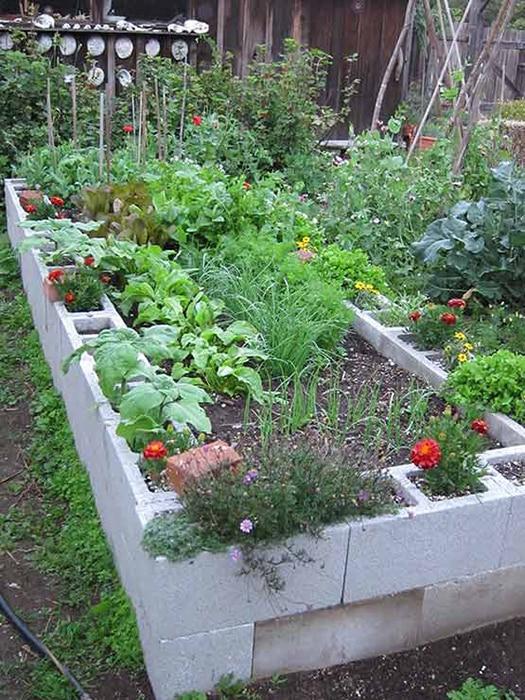
Furthermore, you can also use these hollow pier concrete blocks of different dimensions for your indoor plants by simply painting the blocks. So, you can build a beautiful garden bed with cinder blocks instead of wasting thousands of dollars in building a solid stone bed for your garden.
2. Painted Shelves
Who doesn’t like a colorful shelf that adds to the aesthetic appeal of the house! You can use cinder blocks of different sizes and dimensions to build a unique and beautiful shelf that shows your creativity. You can use solid piers as well as hollow piers and combine them with pavers to create complete blocks and provide a sturdy structure to the shelf.
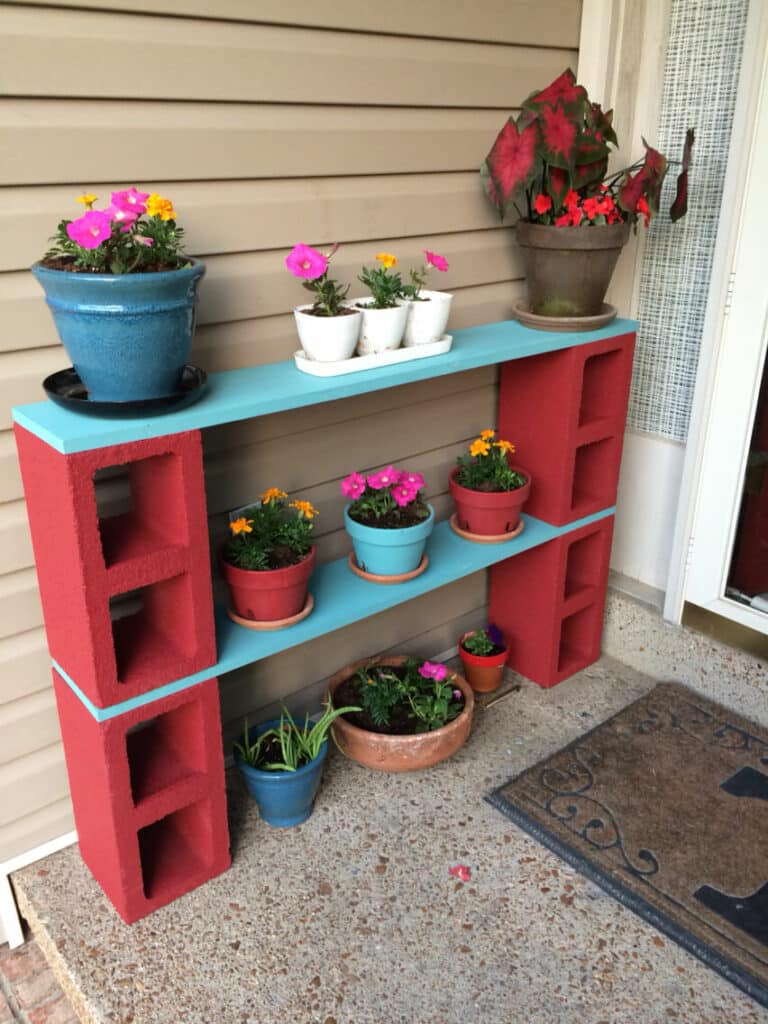
Just paint the blocks to give them a vibrant and colorful look that goes well with your home decor. You can also use the natural holes of the hollow pier blocks to keep books and photo-frames on your newly constructed shelves.
3. Outdoor Bench
Building an outdoor bench using construction blocks can be more suitable than any ordinary wooden or iron bench. The outdoor bench will last for ages without facing any problems due to weather. So, pick up your favorite cinder block size and get on with building a beautiful outdoor bench for your patio.
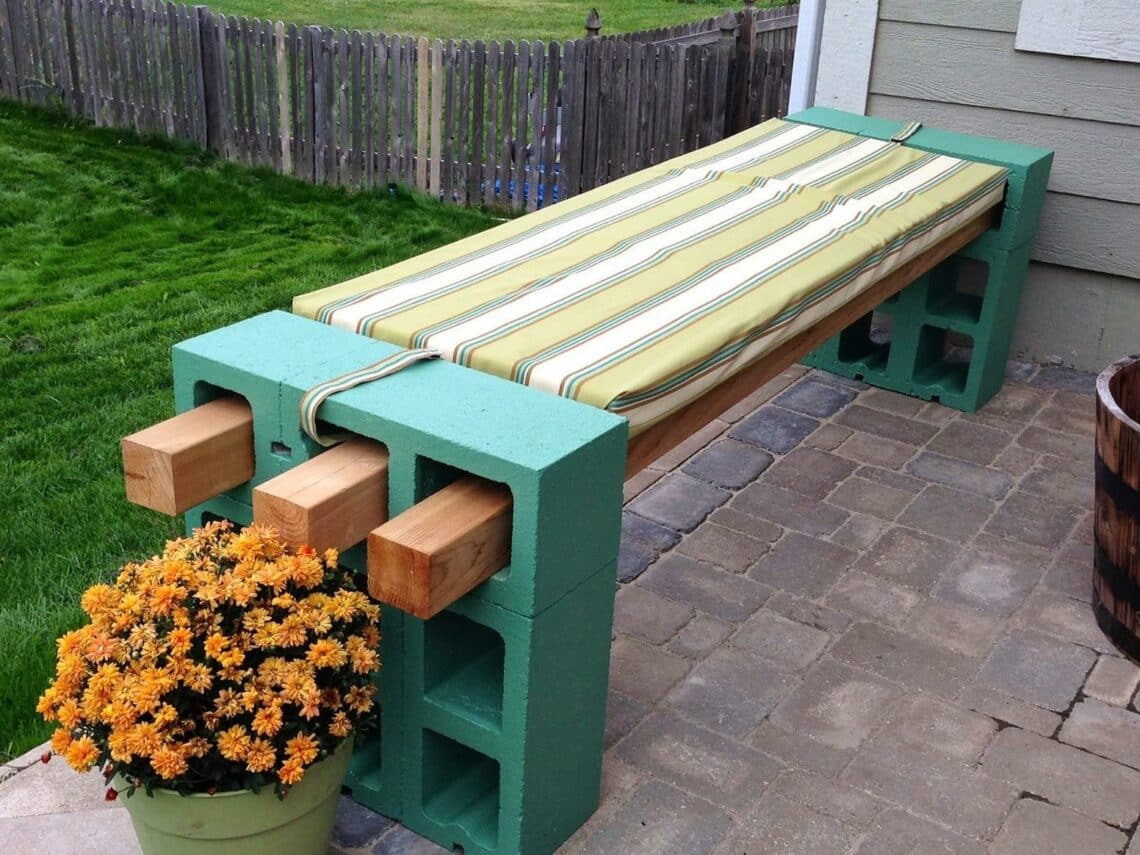
You can choose both hollow pier and solid pier blocks to offer a creative and sturdy design to the bench. The 45-degree angle blocks will be useful in designing the corners of the bench. Just remember to carry some pillows because the construction blocks may not be very comfortable to sit on.
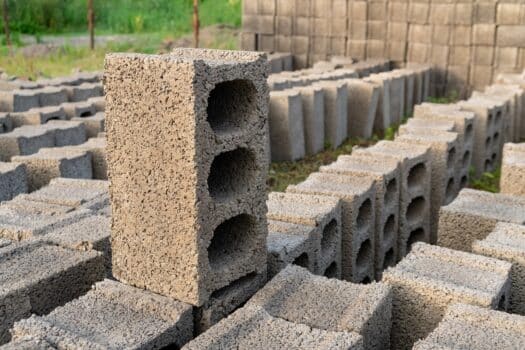
Conclusion
After going through this article, we hope you have a better idea regarding different cinder block dimensions and how they can be used in various building projects. Choosing the right cinder block dimension can help you carry out your projects efficiently.
You can also use different cinder block dimensions for a single project, like building a new shelf or an outdoor bench. Moreover, you can also get inspiration for new building projects based on the different sizes and dimensions of these construction blocks.
Let your creative juices flow and try to incorporate different cinder block dimensions in your building projects. Take care, and we’ll see you next time!


